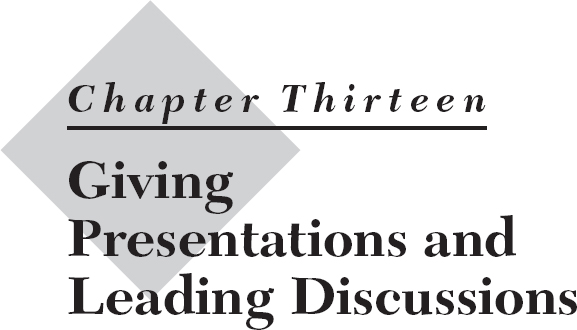
Chapter 4 suggested several ways to design presentations to build interest, maximize understanding and retention, involve participants, and reinforce the content. The tips and illustrations of successful delivery techniques provided here are intended to complement those ideas. In addition, this chapter will cover ways to make smooth transitions between phases of your program and facilitate lively discussions.
KNOWING YOUR GROUP
To many people both in and out of the training profession, the ability to deliver an effective presentation is the mark of a good trainer. Sometimes, sessions that are called training programs are really just forums for presentations by speakers with expertise in a particular area. If a presentation is the only component of your session, don't expect much retention or application. You can expect better results if you include brief presentations at intervals during an otherwise active training program.
To be effective, first consider the nature of the participants. What are their concerns, their backgrounds, and their reasons for attending? Customizing your remarks specifically to your audience is the first step toward a successful presentation. If you originally designed a presentation on writing techniques for college undergraduates, for example, edit your examples to make sure that they are appropriate in an adult working environment before presenting the ...
Get Active Training: A Handbook of Techniques, Designs, Case Examples, and Tips, 4th Edition now with the O’Reilly learning platform.
O’Reilly members experience books, live events, courses curated by job role, and more from O’Reilly and nearly 200 top publishers.

